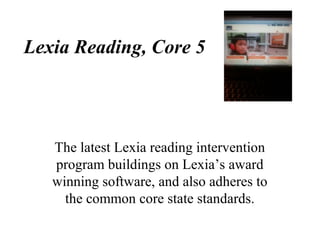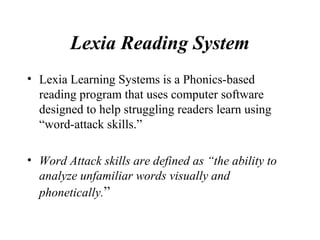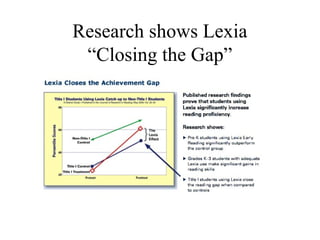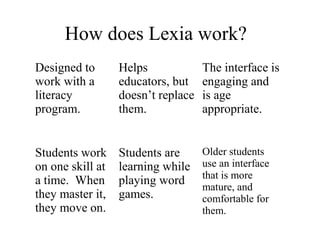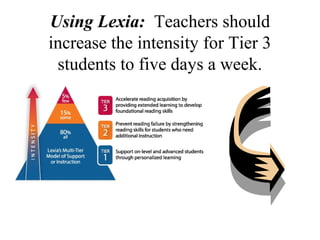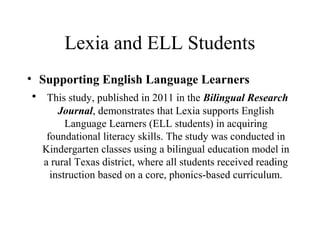Lexia Reading Core 5 is a phonics-based computer program designed to help struggling readers from pre-K to adult learn foundational literacy skills like phonemic awareness and decoding through engaging games and activities. Research shows Lexia can be effective when implemented correctly, with students working on one skill at a time until mastery while educators monitor progress. Lexia has won several awards for transforming education through accessible and enjoyable technology that motivates students to improve their reading ability.
